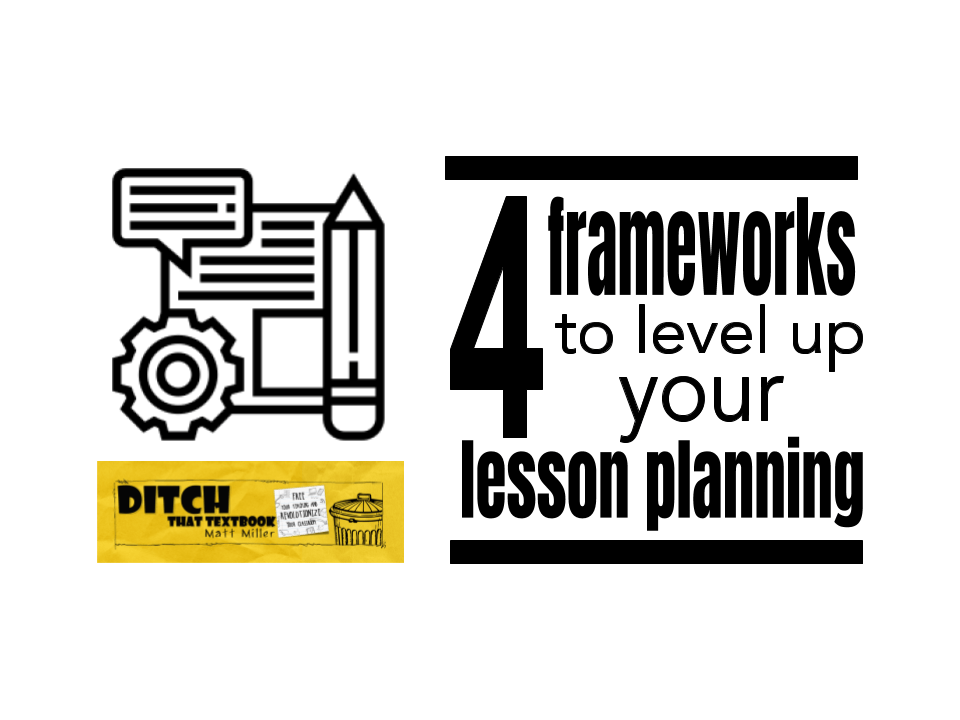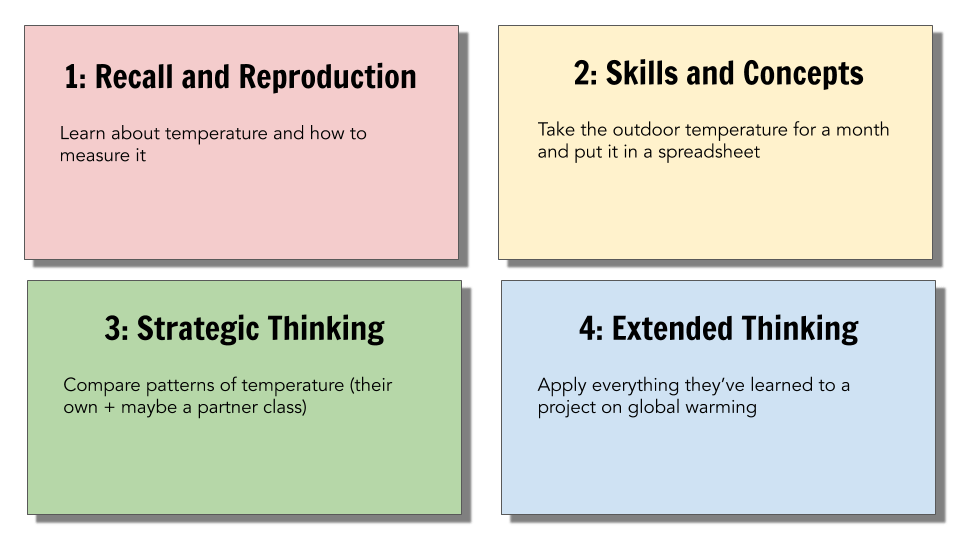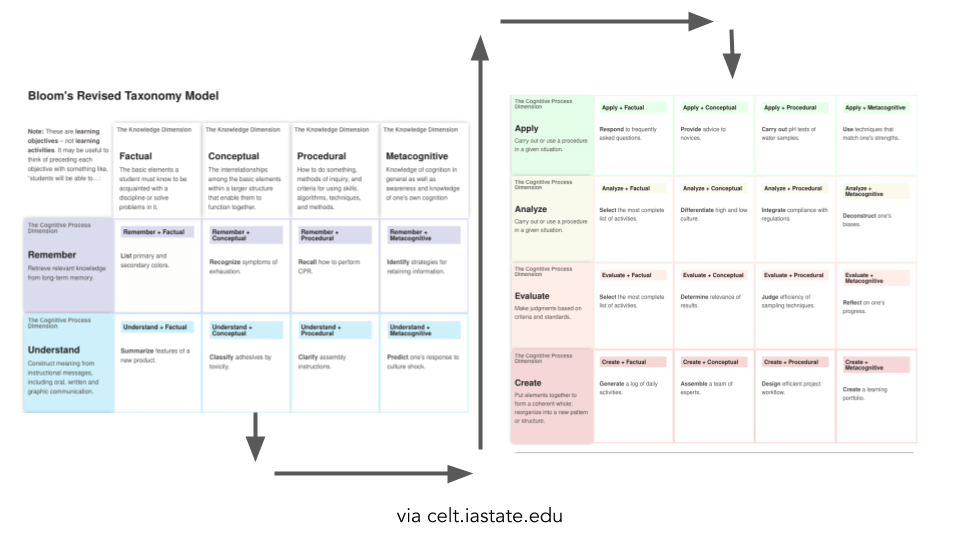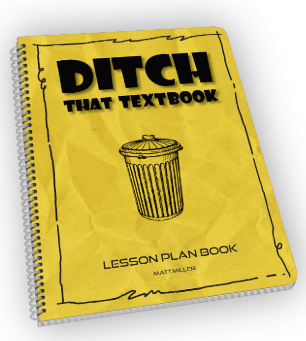

It’s so easy to let our lesson plans move down our priority list. Here are 4 frameworks to help you level up your level planning.
In the hustle and bustle of everyday life, it’s so easy to let our lesson plans move down our priority list. And when that happens, our classes can lack the impact they might have otherwise.
Thankfully, there’s hope. I’ve found several strategies, tips and tricks to make lesson planning more meaningful and effective. If we can write more effective lesson plans — improve our pedagogy, kick up our use of best practices — we can have an enormous impact on our students’ learning.
But that’s probably complicated and time-consuming, right?
Nope. Not a bit.
In fact, I’m going to give you four tools you can add to your lesson planning tool belt that can help you write more effective lesson plans right away. You can refer to these four frameworks any time for ideas and lesson inspiration. They’re research-based and highly effective. Don’t think of them as yet another thing you have to add to your already full plate of teacher responsibilities. Instead, think of them as tools you can add to your tool belt that you can pull out and use whenever you need to.
Let’s start with the first one, a favorite of mine — Webb’s Depth of Knowledge. There’s a good chance you were exposed to Webb’s Depth of Knowledge, or DOK, in your studies to become a teacher, but if you haven’t checked it out since then, you’re missing out on a really useful lesson planning tool. DOK is all about the complexity or the kind of thinking your students are doing. It’s applicable to any grade level, from the littles to the bigs.
There are four DOK levels.
The first is Recall and Reproduction. Basic definitions. Identify steps. List examples. Name the character in the story.
The second is Skills and Concepts. This level builds upon the first level. This is where students analyze cause and effect. Compare and contrast. Summarize. They’re taking the information they learned in level 1 and they’re acting on it, trying to understand relationships between different parts.
The third is Strategic Thinking. In this level, students can use their reasoning skills to make a hypothesis and justify it. If level 2 is applying information in routine, expected situations, this third level is about applying it in non-routine situations. The exceptions and the anomalies. They may refer to prior knowledge and have to think through their justification.
The fourth is Extended Thinking. This is the level where students put everything together. They can apply their new learning to a project or a real-world scenario. They can connect it to other subjects. They see how it fits in their view of the world and in light of what they’ve learned in other classes and in life.
I love the examples that Karin Hess shares in her Depth of Knowledge videos on YouTube. Here’s one of them. In a unit on temperatures and global warming, students may progress through the DOK levels like this:

Having Webb’s Depth of Knowledge handy is really useful for lesson planning. It can help you generate new teaching ideas to help students investigate and understand new ideas in different ways.
Our second framework is the Revised Bloom’s Taxonomy. The standard Bloom’s Taxonomy, created by Benjamin Bloom in the 1950’s and 1960’s, is a staple of teacher prep programs. It focuses on student tasks, what the student is doing. (Depth of Knowledge, on the other hand, focuses on how the student is thinking.)
In 2001, a group of experts in psychology, curriculum and instruction published the Revised Bloom’s Taxonomy. The new version includes a verb to describe the thinking process and an object to describe the knowledge.
The verbs are familiar from the original Bloom’s Taxonomy and include remember, understand, apply, analyze, evaluate and create. The objects are categorized as factual, conceptual, procedural and metacognitive. They actually match up with what we learned about Depth of Knowledge in some ways.
By matching these two categories together in a grid, the Revised Bloom’s Taxonomy gives dozens of ideas to base learning activities. When you’re stuck, just refer to the grid and read the explanations of the verbs and the objects. Apply them to what your students are learning, and there’s a good chance that new ideas will come to mind.
 Another way to approach this is to have students look over Revised Bloom’s and its suggested activities. They may give you some new ideas for activities that help them get deeper into new content and ideas.
Another way to approach this is to have students look over Revised Bloom’s and its suggested activities. They may give you some new ideas for activities that help them get deeper into new content and ideas.
Before we move on, let me stop for a second and encourage you. Remember, I’m not sharing these frameworks as a set of expectations that you must hold yourself to. I’m sharing them as a source of ideas. Think of them like tools in a toolbox. You aren’t required to use every tool in the toolbox for every project. They’re resources. They’re supposed to serve you. You aren’t required to serve them! OK, with that little bit of perspective, let’s move on to the next one.
The third framework is Universal Design for Learning. This framework helps us optimize teaching and learning for everyone based on science on how the brain learns. Thankfully, they’ve done all the scientific analysis and have given us suggestions that can help us start to implement it right away.
Universal Design for Learning, or UDL, is organized into three areas:
So getting students interested, getting them information, and helping them demonstrate it. Pretty basic, right?
Each of those three areas has its own set of guidelines. These UDL guidelines give us even more great ideas on how to improve our lessons so they really work with our students such as:
Each of these guidelines has specific suggestions. On the CAST website, where the guidelines are kept, you can click through to any part of any of the guidelines for help and ideas to implement them. There’s lots of information, so start small and grow little by little. Remember — I’m sharing UDL here as a source of ideas, for it to serve you and not for you to serve it.
The fourth and final framework is the ISTE standards. ISTE, or the International Society for Technology in Education, has published standards for students, educators, education leaders, and technology coaches. By looking over the student standards, you can get new ideas for broadening a lesson or a unit of study. These are the ones that can help your lesson plans to flourish. The other standards will encourage you to grow as a professional, but the student standards can be a really helpful resource for generating ideas. They include empowered learner, digital citizen, knowledge constructor, innovative designer, computational thinker, creative communicator, and global collaborator.
So, there are your four frameworks for creating powerful lessons — Webb’s Depth of Knowledge, Revised Bloom’s Taxonomy, Universal Design for Learning and the ISTE Standards.
I hope your head isn’t spinning with all of these frameworks, but if it is, I can totally understand. They are definitely not four sets of checklists that you have to check off every time. Just think about it. There are TONS of educators around the world that don’t know about these — or just don’t use them. By at least being aware of them and using them for whatever they’re worth — just to get ideas and plan better lessons — you’re leveling up your teacher game.
No pressure. No guilt.
So, what do you do with all of these frameworks? My suggestion is to find the one that seems like the best fit for you. Bookmark it in your web browser. Print a copy of it off. When you sit down to create lesson plans and you struggle, pull it out. Look it over and see if it gives you any inspiration. If you get comfortable with it and are ready to move up another level, check out another framework and learn a little more about it. Don’t worry. These frameworks aren’t going anywhere.
They’ll be here waiting for you whenever you’re ready for them.
I’d love to hear from YOU. Which of these frameworks seems the most useful? What do you like best about it? If you use any of these frameworks already, how do you use them — so that they serve you instead of you serving them?
Please leave a comment below. I can’t wait to see it!

NOW AVAILABLE: The Ditch That Textbook Lesson Plan Book combines a flexible design with TONS of resources to level up your lesson plan game.
For notifications of new Ditch That Textbook content and helpful links:
Interested in having Matt present at your event or school? Contact him by e-mail!
Matt is scheduled to present at the following upcoming events:
[getnoticed-event-table scope=”upcoming” max=”15″ expanding=”false”]

Session expired
Please log in again. The login page will open in a new tab. After logging in you can close it and return to this page.